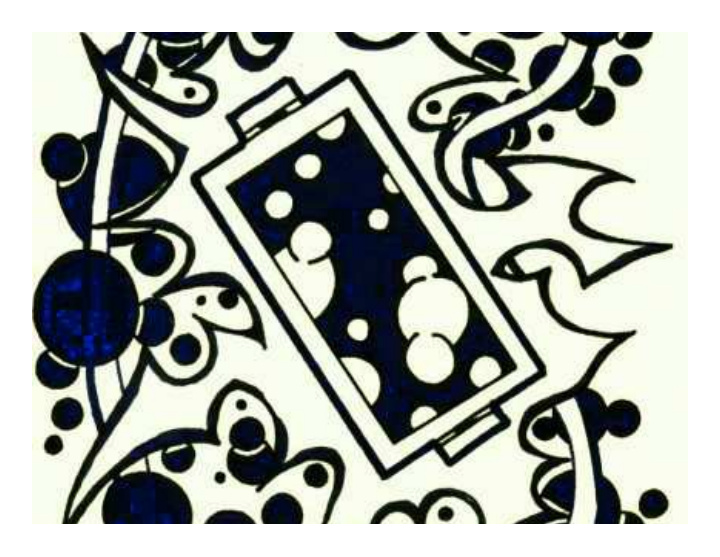



Future Energy Source?
City College of San Francisco • Community College • No research facilities • 100,000+ students
Background • Photosynthesis vs. Cellular Respiration • The Carbon Cycle in an O2 environment: – Solar energy and CO 2 used to produce glucose. – Consumption and metabolic processing of glucose. – Waste elimination – exhalation of CO 2 . • Aerobic use of 0 2 .
Photosynthesis (forward reaction) Cellular Respiration (reverse reaction)
Bacteria • Various bacteria have been used in fuel cells to generate electricity from organic wastes. • Photosynthetic bacteria use sunlight to manufacture glucose. • Some contain metabolic pathways that allow the oxidation or reduction of iron.
Other approaches to biology- based energy solutions • Cellulosic ethanol • Lipid synthesis by photosynthetic diatoms • Electricity generation from wastewater • Microbial fuel cells
Our Approach • Create a solar powered fuel cell by: – 1: To utilize phototrophic bacteria, contained in a cathode chamber, to accept electrons, CO 2 , H + , and sunlight to generate glucose (photosynthate). – 2: Glucose is exported to the anode chamber for metabolism by the chemotropic bacteria. This yields electrons, CO 2 , H + . – 3: The electrons will (ideally) flow from the anode to the cathode to generate a current. CO 2 and H + are exported back to the cathode in a self sustaining cycle.
Fuel Cell Conceptualization
Fuel Cell Conceptualization 80% CO2/ 20% N2 tank
Fuel Cell Conceptualization Many valves 80% CO2/ 20% N2 tank
Fuel Cell Conceptualization Many valves Media bottle and needle 80% CO2/ 20% N2 tank
Fuel Cell Conceptualization Many valves Media bottle and needle 80% CO2/ 20% N2 tank
Fuel Cell Conceptualization Many valves Exit valve to alcohol bottle Media bottle and needle 80% CO2/ 20% N2 tank
Fuel Cell Conceptualization Anode- R. rerrireducens eats glucose, Many valves adds electrons to wire Exit valve to alcohol bottle Media bottle and needle 80% CO2/ 20% N2 tank
Fuel Cell Conceptualization Anode- R. rerrireducens eats glucose, Many valves adds electrons to wire Exit valve to alcohol bottle Media bottle and needle Cathode- R. 80% CO2/ palustris 20% N2 tank oxidizes Fe2+, makes glucose
Fuel Cell Conceptualization Anode- R. rerrireducens eats glucose, Many valves adds electrons to wire Exit valve to alcohol bottle Media bottle and needle Cathode- R. 80% CO2/ H+- selective palustris 20% N2 tank Nafion membrane oxidizes Fe2+, balances charge makes glucose
Fuel Cell Conceptualization Anode- R. rerrireducens eats glucose, Many valves adds electrons to wire Exit valve to alcohol bottle Media bottle and needle Cathode- R. 80% CO2/ H+- selective palustris 20% N2 tank Nafion membrane Dialysis oxidizes Fe2+, balances charge membrane makes glucose shares glucose
Our “Work Horses” Chemotropes which reduce Fe 3+ : – S. Oneidensis – R. ferireducines • Phototropes which Oxidize Fe 2+ : – R. palustris – hopefully transformed! • Genetic manipulation: – P. aeruginosa- source of OprB gene (membrane porin sequence). – pJQ200SK plasmid suicide vector for R. palustris . – E. coli- for plasmid production/ purification.
The BioBrick • Isolation of the OprB gene via PCR. • Site directed mutagenesis to remove restriction sequence. • Ligation of “pieces” into a plasmid vector.
OprB: code for a glucose uniporter, found in P. aeurignosa.
Glucose Uniporter Device OprB IPTG sensory device: Off- the shelf Glucose synthetic lac operon (BBa_J61034) uniporter B0010 B0012 B0034 (BBa_K226001)
Results • Success in plasmid digestion!! • PCR Proved extremely difficult. • Amplification of the “short” end of the gene. Trouble capturing the entire gene, multiple attempts. Many primers ordered.
CCSF Facilities CCSF was unable to provide a laboratory for our use. One memorable time we were up in the green house… Microbio in a spore filled green house???? Most of the PCR reactions were run within a 0.5 m 2 area in a storage room.
Acknowledgements And most importantly…
The generosity of Mrs. Yvonne Koshland Daniel Koshland recently turned his attention from the study of receptors and signal transduction to the emerging field of bioenergy, looking into the use of cyanobacteria to produce methane…provides for a genetically modified cyanobacteria expressing at least a first foreign gene, wherein the genetically modified cyanobacteria is capable of transporting products of photosynthesis across the cyanobacteria's membrane. Yvonne Koshland and Daniel Koshland (1920-2007)
Patent application title: Methods and compositions for production of methane gas (filed Sep. 15, 2005 ) Inventors: Daniel E. Koshland, JR. Agents: UC Berkeley, et.al. • Abstract: The present invention provides methods and compositions for sustained methane production from atmospheric CO2 and solar energy from the sun. In general the methods involve culturing cyanobacteria in a first culture vessel and collecting and diverting the photosynthesis products, including glucose or acetic acid, to a second culture vessel including methanogenic bacteria….
Koshland patent Claims: • 17. A genetically modified cyanobacteria expressing at least a first foreign gene, wherein the genetically modified cyanobacteria is capable of transporting products of photosynthesis across the cyanobacteria's membrane. • 20. The genetically modified cyanobacteria of claim 17, wherein the first foreign gene encodes a glucose transporter. • Source: http://www.faqs.org/patents/app/20090035832#ixzz0U8k4UOLf
Recommend
More recommend